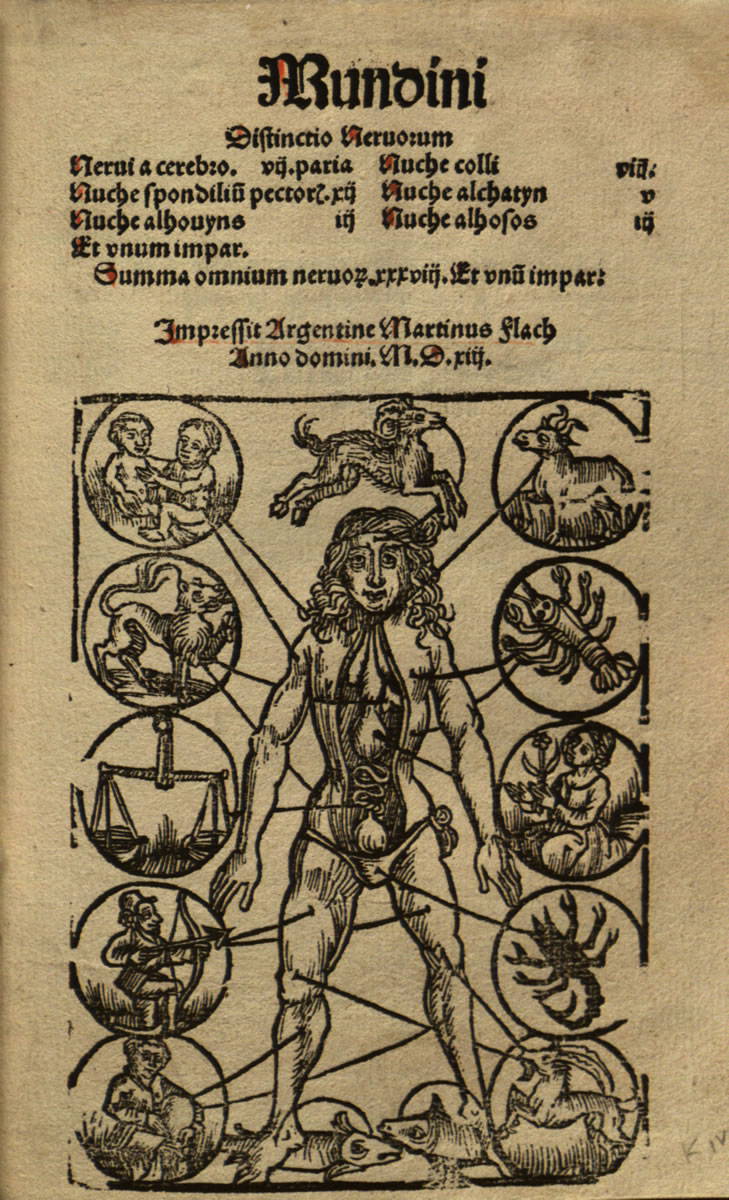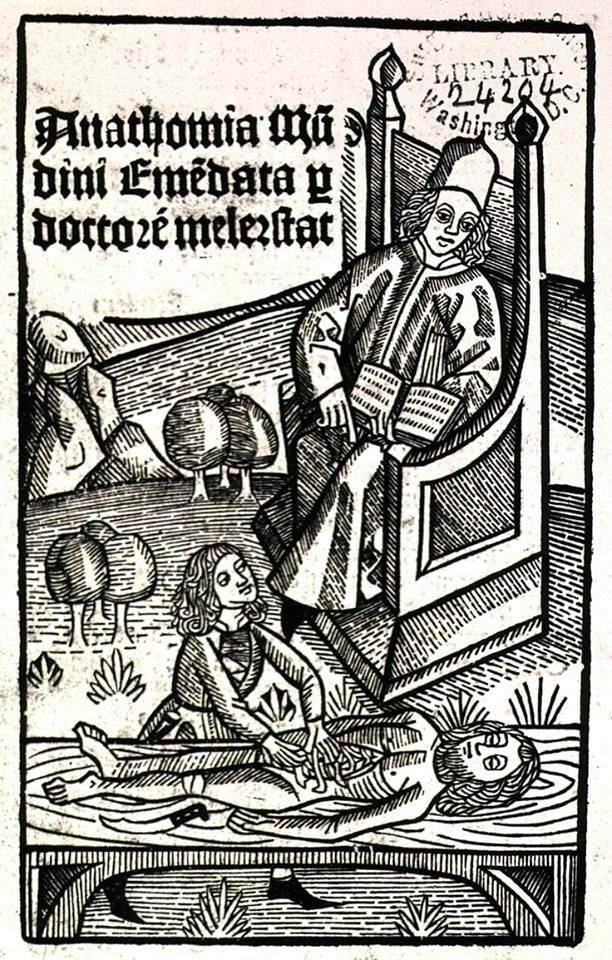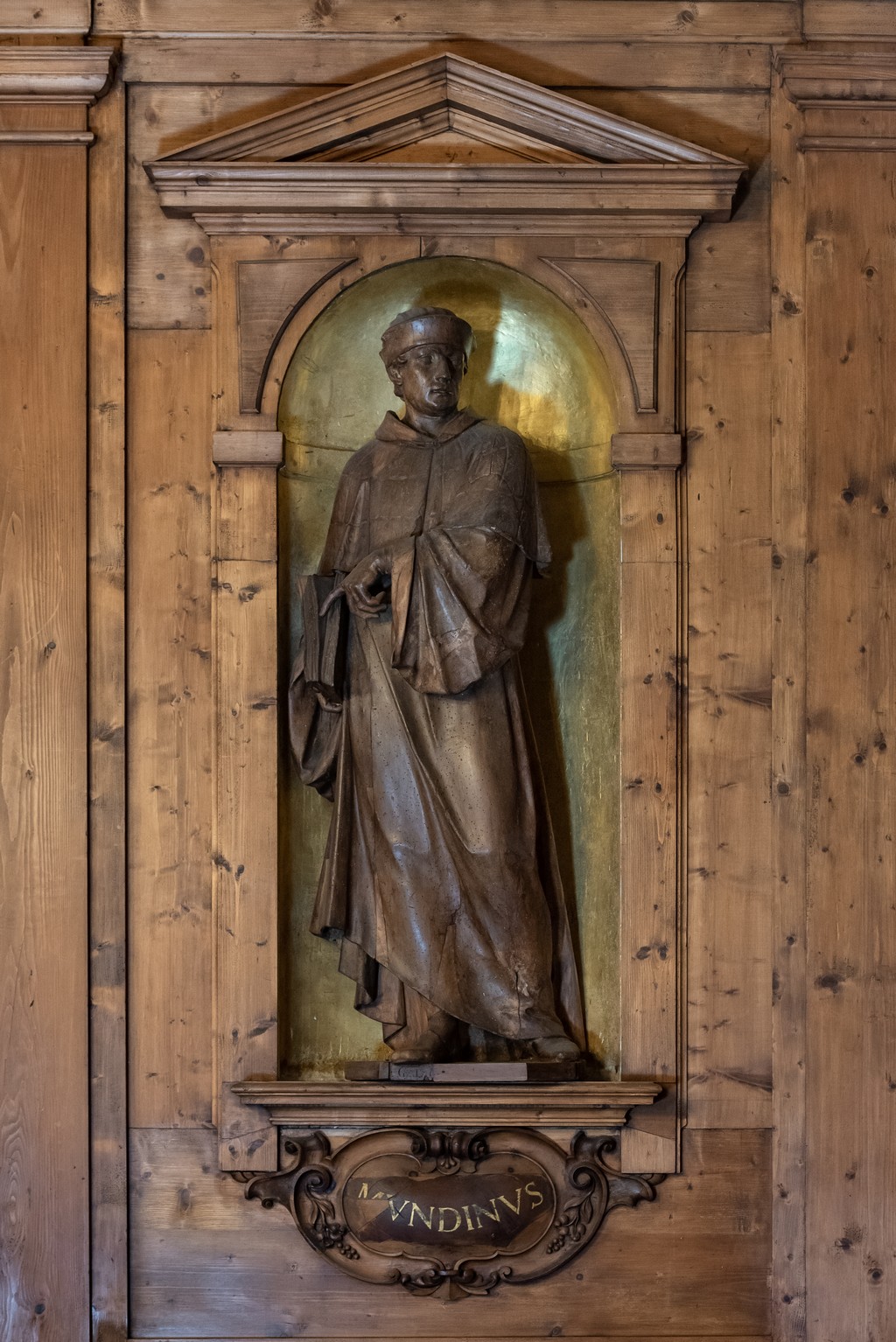
(PDF) Biografia DI Mondino De' Liuzzi Da Bologna Piero P
Mondini de' Liuzzi (c1270-1326), professor at the Bologna Medical School, supervised the first documented session of public dissection approved by the church, in January 1315. In 1316 the.

(PDF) Mondino de Luzzi a luminous figure in the darkness of the Middle
Mondino de Luzzi (also known as Mundini or Mundinus, Liuzzi, Lucci, Liucius, or even Lentiis and Leutiis) was an Italian physician, anatomist, and professor of surgery at the University of Bologna.

Dr Dave Gonsalvez on Mondino de Liuzzi The Laborastory
Mondino De Luzzi, Mondino De' Luzzi MONDINO DE' LUZZI (also Liucci or Liuzzi )(b. Bologna, Italy, ca. 1275; d. Bologna, 1326) anatomy. The name Mondino was probably an… Dissection, dissection of the human body is the act or art of cutting open the body in order to display and study the topographical anatomy and structure of its…

Mundinus, the Italian anatomist, making his first dissection in the
Mondino De' Liuzzi Physician and anatomist, professor of medicine and philosophy (Bologna, c. 1275 - 1326). Mondino introduced the revolutionary practice of autopsy as part of the empirical teaching of medicine. This allowed the discipline to gradually free itself from the theories of the ancients, moving towards a modern conception of knowledge.

Pin on Exposición Leonardo
Mondino's Anothomia was written in Bologna around 1316. This book is the intellectual legacy of one of the fathers of human anatomy, and probably represents a collection of lessons given by the author at the Studium in Bologna. Mondino's Anothomia witnesses a profound renewal of the mode of understanding and teaching human anatomy through.

Mondino de' Liuzzi, Anatomia Biblioteca dell'Archiginnasio
Mondino De' Luzzi, (born c. 1270, Bologna, Italy—died c. 1326, Bologna), Italian physician and anatomist whose Anathomia Mundini (MS. 1316; first printed in 1478) was the first European book written since classical antiquity that was entirely devoted to anatomy and was based on the dissection of human cadavers.

Vesalius Early Years and the State of Medical Knowledge
Mondino de Luzzi, or de Liuzzi or de Lucci, ( c. 1270 - 1326), also known as Mundinus, was an Italian physician, anatomist and professor of surgery, who lived and worked in Bologna.

Mondino De Liuzzi primi passi della moderna anatomia Storia della
Generally accepted as the first true anatomical dissection manual since Galen's works in Ancient Greece, Mondino de Luzzi's Anathomia corporis humani, completed in 1316, became widely distributed after its printing in Padua in 1478.Distinguishing himself from previous scholars who declared the study of anatomy unnecessary, De Lucci opens his work stating that human beings are superior to.

Figure 8 from DEVELOPMENT OF ANATOMIC SCIENCE IN THE LATE MIDDLE AGES
Medieval anatomist Mondino de' Liuzzi (1270-1326) lived and thrived when the "freeze" on medical and scientific advancement began to thaw. Known as the "Restorer of Anatomy", de' Liuzzi is considered the first to perform a dissection, document it, and publish his findings.

Liuzzi, Mondino de' Storia e Memoria di Bologna
Mondino de' Liuzzi, noto anche come Raimondino di nome, e de' Liucci, de' Luzzi o de' Lucci di cognome; detto Mundinus ( Bologna, 1275 - Bologna, 1326 ), è stato un anatomista italiano, universalmente considerato l'ideatore della moderna anatomia . Indice 1 Biografia 2 L'anatomia 3 Mundinus nell'arte e letteratura 4 Note 5 Bibliografia

(PDF) Mondino de Luzzi a luminous figure in the darkness of the Middle
Mondino de Luzzi (also known as Mundini or Mundinus, Liuzzi, Lucci, Liucius, or even Lentiis and Leutiis) was an Italian physician, anatomist, and professor of surgery at the University of Bologna.

(PDF) Una fanciulla al tavolo di Mondino de Liuzzi?
Mondino de Luzzi (also known as Mundini or Mundinus, Liuzzi, Lucci, Liucius, or even Lentiis and Leutiis) was an Italian physician, anatomist, and professor of surgery at the University of.

"Mondino dei Luzzi, 1326." Catalogue search Collection
anatomy. The name Mondino was probably an endearing form of Raimondo. The Luzzi family was prominent in Florence, but Mondino's lather, Nerino Frazoli de' Luzzi, and his uncle, Liuccio, had moved to Bologna by 1270, where Mondino was born about 1275.

Mondino_Dei_Luzzi_1541_Heart
Art in Science: Mondino de' Liuzzi: The Restorer of Anatomy. Art in Science: Mondino de' Liuzzi: The Restorer of Anatomy. Art in Science: Mondino de' Liuzzi: The Restorer of Anatomy Clin Orthop Relat Res. 2017 Jul;475(7):1791-1795. doi: 10.1007/s11999-016-5213-5.

Liuzzo e Mondino de' Liuzzi Storia e Memoria di Bologna
Mondino de Luzzi had 2 main achievements: In 1316, he wrote a book called Anathomia.His book was used to train and educate doctors about dissections until the 1500s. Mondino would supervise public dissections.

Mondino Palazzo dell'Archiginnasio
Mondino de Luzzi, or de Liuzzi or de Lucci, [1] [2] ( c. 1270 - 1326), also known as Mundinus, was an Italian physician, anatomist and professor of surgery, who lived and worked in Bologna.